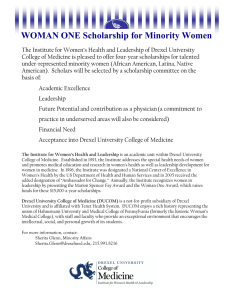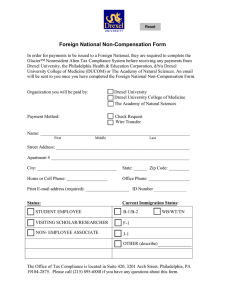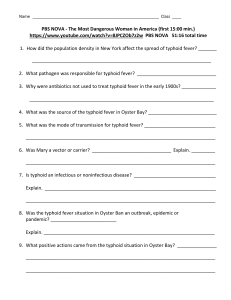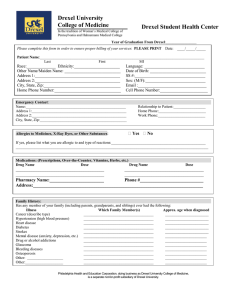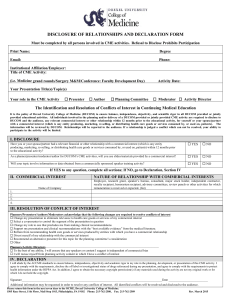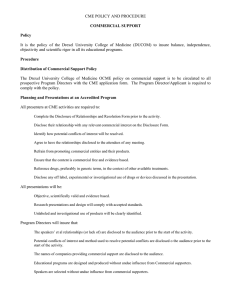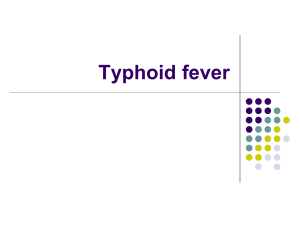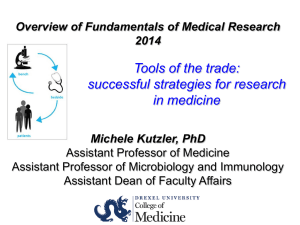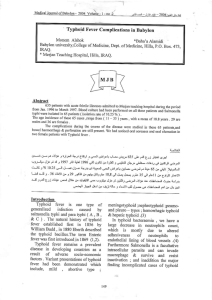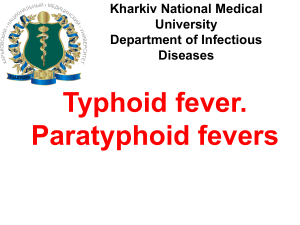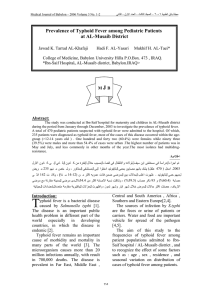HISTORY OF MEDICINE IN A DAY AND A WALK Abstract
advertisement
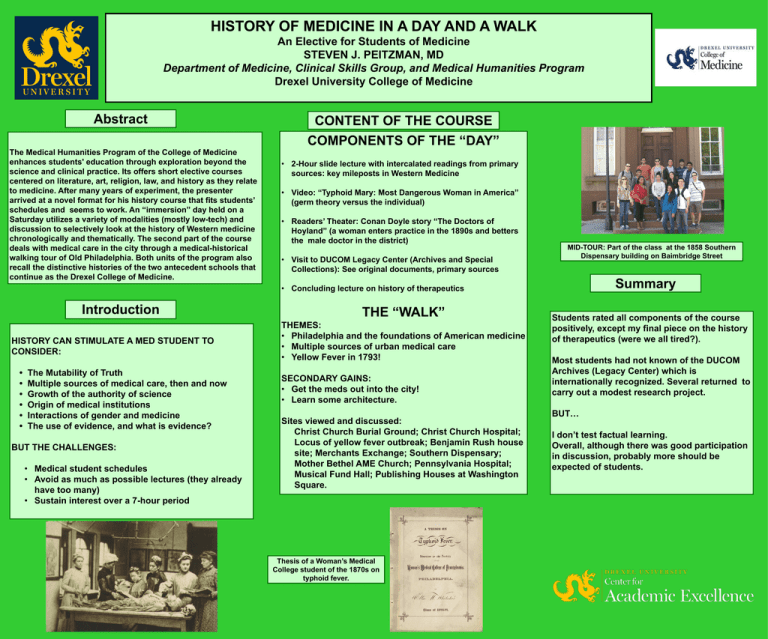
HISTORY OF MEDICINE IN A DAY AND A WALK An Elective for Students of Medicine STEVEN J. PEITZMAN, MD Department of Medicine, Clinical Skills Group, and Medical Humanities Program Drexel University College of Medicine Abstract The Medical Humanities Program of the College of Medicine enhances students' education through exploration beyond the science and clinical practice. Its offers short elective courses centered on literature, art, religion, law, and history as they relate to medicine. After many years of experiment, the presenter arrived at a novel format for his history course that fits students’ schedules and seems to work. An “immersion” day held on a Saturday utilizes a variety of modalities (mostly low-tech) and discussion to selectively look at the history of Western medicine chronologically and thematically. The second part of the course deals with medical care in the city through a medical-historical walking tour of Old Philadelphia. Both units of the program also recall the distinctive histories of the two antecedent schools that continue as the Drexel College of Medicine. CONTENT OF THE COURSE COMPONENTS OF THE “DAY” • 2-Hour slide lecture with intercalated readings from primary sources: key mileposts in Western Medicine • Video: “Typhoid Mary: Most Dangerous Woman in America” (germ theory versus the individual) • Readers’ Theater: Conan Doyle story “The Doctors of Hoyland” (a woman enters practice in the 1890s and betters the male doctor in the district) • Visit to DUCOM Legacy Center (Archives and Special Collections): See original documents, primary sources MID-TOUR: Part of the class at the 1858 Southern Dispensary building on Baimbridge Street Summary • Concluding lecture on history of therapeutics Introduction HISTORY CAN STIMULATE A MED STUDENT TO CONSIDER: • • • • • • The Mutability of Truth Multiple sources of medical care, then and now Growth of the authority of science Origin of medical institutions Interactions of gender and medicine The use of evidence, and what is evidence? BUT THE CHALLENGES: • Medical student schedules • Avoid as much as possible lectures (they already have too many) • Sustain interest over a 7-hour period THE “WALK” THEMES: • Philadelphia and the foundations of American medicine • Multiple sources of urban medical care • Yellow Fever in 1793! SECONDARY GAINS: • Get the meds out into the city! • Learn some architecture. Sites viewed and discussed: Christ Church Burial Ground; Christ Church Hospital; Locus of yellow fever outbreak; Benjamin Rush house site; Merchants Exchange; Southern Dispensary; Mother Bethel AME Church; Pennsylvania Hospital; Musical Fund Hall; Publishing Houses at Washington Square. Thesis of a Woman’s Medical College student of the 1870s on typhoid fever. Students rated all components of the course positively, except my final piece on the history of therapeutics (were we all tired?). Most students had not known of the DUCOM Archives (Legacy Center) which is internationally recognized. Several returned to carry out a modest research project. BUT… I don’t test factual learning. Overall, although there was good participation in discussion, probably more should be expected of students.

